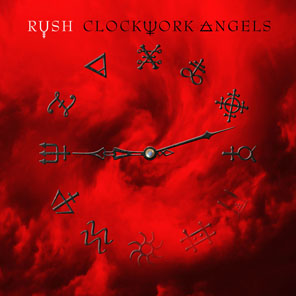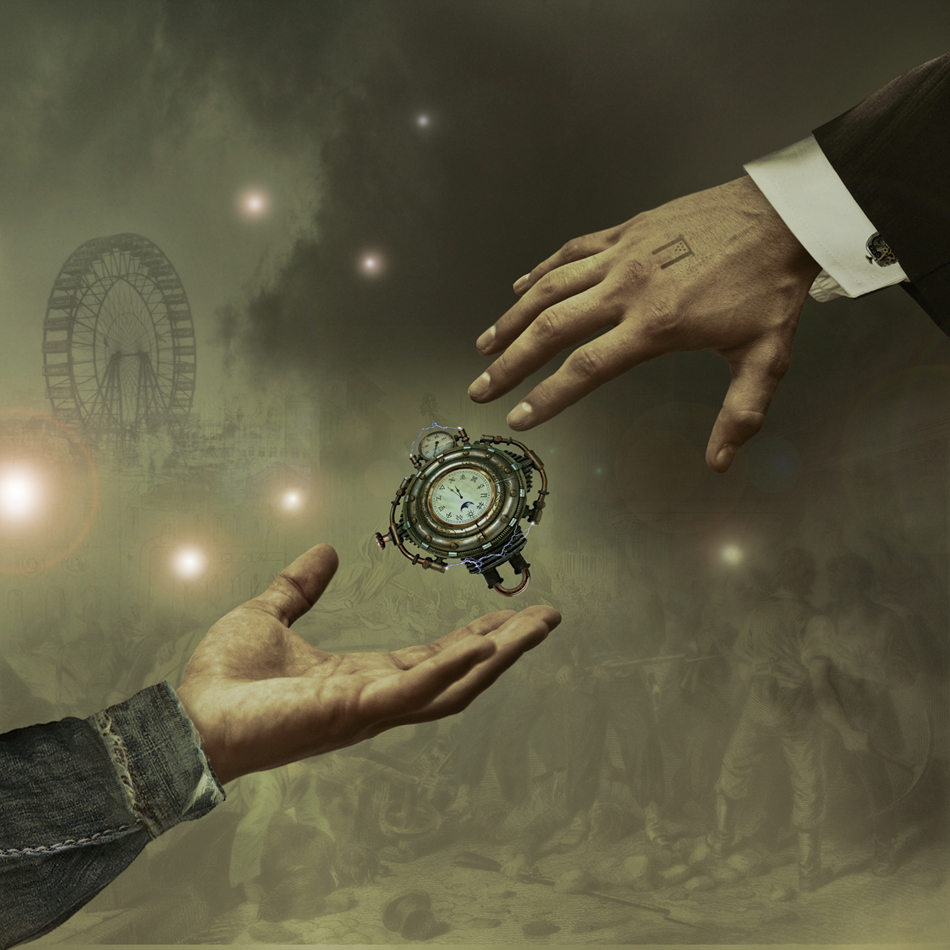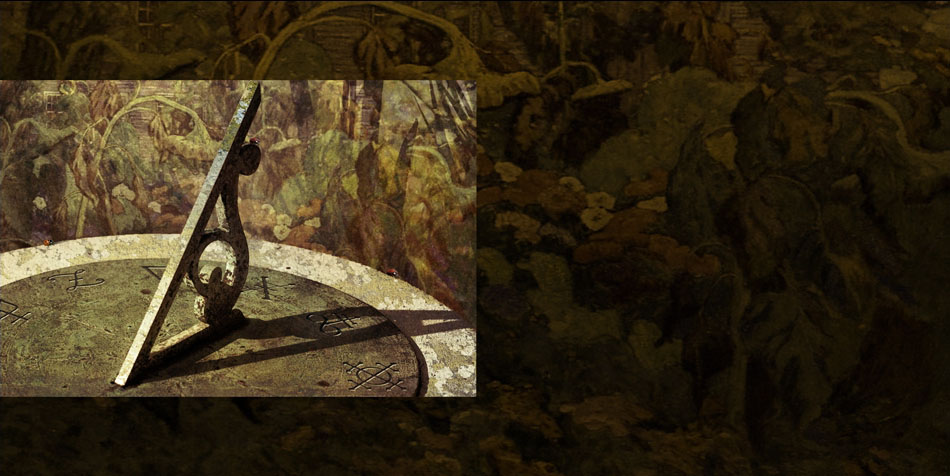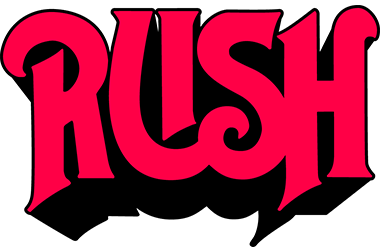CLOCKWORK ANGELS
Album ReviewAll reviews are (c) John Patuto
In the Fullness of Time: A Look Back at Clockwork Angels on its 5th Anniversary
 It all began over 7 ½ years ago, in the late fall of 2009. Neil Peart had just published an update to the ‘News, Weather, and Sports’ section of his website. In the November 2009 entry titled Autumn Serenade, the Rush drummer and lyricist first revealed that he and his fellow bandmates would be getting together to discuss the future of the band or, as he put it, “…another kind of 'reinvention'.” Beyond the exciting news of Rush returning to the studio came the stark realization that the band’s ‘reinvention’ may actually lead to something entirely different. It was this statement from Peart that gave everyone pause:
It all began over 7 ½ years ago, in the late fall of 2009. Neil Peart had just published an update to the ‘News, Weather, and Sports’ section of his website. In the November 2009 entry titled Autumn Serenade, the Rush drummer and lyricist first revealed that he and his fellow bandmates would be getting together to discuss the future of the band or, as he put it, “…another kind of 'reinvention'.” Beyond the exciting news of Rush returning to the studio came the stark realization that the band’s ‘reinvention’ may actually lead to something entirely different. It was this statement from Peart that gave everyone pause:“The importance of 'the album' is not what it was, and there is currently a reversion to a musical climate rather like the 1950s, when only 'the song' matters. Radio, downloads, and 'shuffle' settings are inimical to collected works. Because of that reality, record company advances that used to pay for album projects are a thing of the past, so if that was what we wanted to do, we'd be on our own.”Speculation and debate began to spread throughout the Rush fan community. Would Rush record a new album, or would they only record a song or two? Would they tour? Could they justify a tour if it wasn’t in support of a new album? Would they, instead, record a Feedback II album instead of creating new, original material?
The questions continued until Peart seemingly confirmed the band’s direction in a January 2010 interview with the Canadian Press. In the interview, Peart had this to say:
"We're thinking of writing and recording a few songs and maybe releasing them, and playing them live, and then going back and doing some more later. We just feel really free (in terms) of what we might do right now. Anything is possible in the nicest way and we like the fact of shaking it all up."Over the next couple of months, numerous interviews with all three band members solidified the fact that they were, indeed, working on a new album. Additionally they were also looking to go out on tour during the Summer where ‘some’ of the songs might be highlighted. It seemed that with every passing day, there was more news about the tour, and the songs Rush were working on. Then, within the span of the final week in May, official news broke that Rush would be releasing two new singles from their ‘upcoming (and untitled) album’ – ‘Caravan’ and ‘BU2B’ on June 1st. Then, days later, the album had an official title: Clockwork Angels.
Everything began to fall in place. The first two singles were released, the band went out on their ‘Time Machine 2010’ tour where they showcased the two new songs, and the tour continued well into 2011. Throughout that period of time, Rush continued to write, record, and evolve Clockwork Angels into something that, figuratively and perhaps literally, made the Rush community drool with anticipation – a bona fide concept album. Throughout their progressive history, Rush have always been known as the band whom recorded lengthy conceptual pieces. However they had never recorded a true concept album with the possible, arguable, exception of 1984’s Grace Under Pressure. With Clockwork Angels, it was revealed that Neil Peart had developed a fanciful, steampunk-inspired story which would be woven throughout each of the album’s songs. His thematic idea of “a future as seen from the past…with alchemy, clockwork, and steampunkery…” would connect all of the songs together, while still allowing them to stand individually. With their Snakes & Arrows Rush-fan producer Nick Raskulinecz back at the helm, Rush fans salivated at the notion of the band’s 20th album harkening back to their progressive-ladened roots.
Clockwork Angels did not disappoint.
In true clockwork fashion, the album featured twelve songs; presumably each aligning with the twelve hours on the face of a clock, as revealed on the album’s cover art. As an homage to their 2112 album, the clock read 9:12 which, assuming the time was of the PM variety, translates to 21:12 in military time. A more important tie-back to the 2112 album came in the form of introductions to each song, which appeared in the liner notes. These introductions, similar to those that appeared ahead of each section of 2112, provided context for each song in the grander scheme of the entire Clockwork Angels story. A story of a young man on a quest to find himself in a steampunk, sci-fi world teeming with anarchists and angels, pirates and carnival dwellers, explorers and Watchmakers. A story where a man, who always felt so small in his world, never stopped thinking big…
And it is on that theme that Clockwork Angels begins, with the opening track, and first released single, Caravan. With subtle changes from the single-version released two years earlier, Caravan’s bombastic groove and driving vocals immediately grab hold and remind you just why Rush is considered one of the best power trios of all time. The track, much like the theme of the album, is an exploration for each member of the band. As the young man begins his exploration of the world, so too do the members of Rush. Lifeson’s near-frantic guitar work blends perfectly with Lee’s incredible bass work. Of course pulling it all together is Peart’s laser-focused drumming which didn’t stray around his kit as much as usual. Instead he focused more on the power of his snare, floor toms, and bass drum. With Caravan’s recurring tagline of “In a world where I feel so small, I can’t stop thinking big…”, it was clear that Rush, too, were thinking – and playing – big.
BU2B or ‘Brought Up to Believe’, the album’s second track, and second single, begins with a hauntingly gentle acoustic guitar introduction which layers on top of Geddy Lee’s whispering, opening vocals:
“I was brought up to believe
The universe has a plan
We are only human
It's not ours to understand…”
As the acoustic introduction fades, the song bursts to life with a hyperactive, relentless drive that showcases just how tight this power-trio can be. Given the lyrical theme of the song, with lines such as:
”Believe in what we're told
Until our final breath
While our loving Watchmaker
Loves us all to death…”,
Geddy Lee brings a forceful, almost angered direction to his vocal work; a stark contrast from the kinder, gentler introductory performance. BU2B doesn’t let up for a single moment, thanks to Lifeson’s layered guitar approach; something he would rarely repeat throughout the rest of the album.
In a stark contrast to the powerful opening tracks of Clockwork Angels, the album’s title track takes a decidedly more grandiose approach. Clocking in at over seven minutes, Clockwork Angels is one of the longest songs Rush has recorded in decades. And yet not a moment of the sweeping song seems excessive. It is a brilliantly crafted piece that speaks of the mythical Angels of Chronos Square, the city where our traveler most wanted to visit. Geddy Lee’s vocals have rarely sounded better while Alex Lifeson’s gorgeous textural, blues-filled guitar work is among his best – ever. Pepper in some playful tom work from the professor and you have what many have come to think of as one of Rush’s crowning achievements. “As if to fly…” indeed.
 The Anarchist begins with an energetic instrumental section that’s propelled by a fierce bass melody, however it’s Lifeson’s work that really shines here. Not only from his guitar work, but from the fact that he created the drum pattern for the song as well; an atypical approach for any Rush song. Add in soaring string work, alongside some Eastern instruments, and the The Anarchist delivers musically what the lyrics convey sinisterly: “I plan my vengeance on my own - and I was always alone…”
The Anarchist begins with an energetic instrumental section that’s propelled by a fierce bass melody, however it’s Lifeson’s work that really shines here. Not only from his guitar work, but from the fact that he created the drum pattern for the song as well; an atypical approach for any Rush song. Add in soaring string work, alongside some Eastern instruments, and the The Anarchist delivers musically what the lyrics convey sinisterly: “I plan my vengeance on my own - and I was always alone…”
Born out of a Lee/Lifeson jam, the fifth track, Carnies, is an atmospheric song in that Lifeson’s guitar work, and particularly his solo on this piece, bring about a true carnival vibe. In fact, there are three separate guitar tracks layered in the song; one on the right, one of the left, and one in the middle. Geddy’s vocals reach some of their highest registers on Carnies which meshes well with Peart’s thunderous tom and bass drum work. The song is truly a work of energy, which becomes even more apparent when witnessed live. It was definitely one of the highlights of the Clockwork Angels tour.
After five powerful songs, Halo Effect is a welcome respite with quiet, melodic, and subtle undertones that allow Geddy’s vocals to truly shine. Simple, yet gorgeous acoustic work by Lifeson coupled with background string work bring the painful nature of the lyrics to light:
“What did I see?
Fool that I was
A goddess, with wings on her heels
All my illusions
Projected on her
The ideal, that I wanted to see…”
Alex captured the sentiment of the song perfectly during an interview with Total Guitar Magazine:
”There’s such a great acoustic sound on it, and the solo section is something that’s quite different for us. It’s frivolous and light, kind of like butterflies in your stomach – that feeling you get when you’re in love with someone you shouldn’t have fallen in love with…””In love with illusions again…”
Where Halo Effect is subtle, Seven Cities of Gold is unabashedly cinematic, with a Xanadu-like grandeur. Lyrically inspired by tales of Spanish conquistadors of the 16th century, Cities… is a raucous, bluesy rock journey filled with crisp drum patterns, Lee-described “Funky” bass lines, and swaggering guitar riffs. The song is presented as a journey; building and shifting during the opening segment before slamming into high gear as Geddy wails the opening lines:
” A man can lose his past, in a country like this
Wandering aimless
Parched and nameless.
A man could lose his way, in a country like this
Canyons and cactus
Endless and trackless…”
The album’s eighth track is considered to be one of its most accessible. Despite The Wreckers heady lyrical message of plundering pirates who deliberately lure in ships to run them aground, the music is uplifting, simplistic (well, for a Rush song…), and clean. Its catchy refrain ” All I know is that sometimes you have to be wary, of a miracle too good to be true…” is one example of how vocally dynamic Geddy Lee is on this album. He may not have the stratospheric abilities he had in decades past, but he makes up for it by effortlessly climbing up and down the vocal-scale ladder.
Headlong Flight, the album’s third single released two months ahead of the album’s debut, could not have been a better choice to herald in the band’s return. The song showcases Rush at, arguably, their most exhilarating. Where Geddy revealed his dynamic vocal range in The Wreckers, he reminds everyone just how powerful a singer he is with Headlong Flight. Holding high notes for impossibly long spans of time, Lee bellows out the main theme of the song ”I wish that I could live it all again…” Peart is also at his best, inserting fluid drum solos with mind-bending rolls. Rarely has he performed with as much controlled force as he does here. Lifeson, of course, ties the entire song together with his primal, wah-wah infused playing. For a 7+ minute song, Headlong Flight soars by at amazing speed, and definitely leaves you wanting more.
BU2B2, the follow-up to the album’s second track Brought Up to Believe, is a far more somber piece than its predecessor. It marries well with the opening acoustic introduction of BU2B, given Geddy Lee’s emotive singing, which is accompanied solely by strings. The depressive nature of the lyrics, “Belief has failed me now, life goes from bad to worse. No philosophy consoles me, in a clockwork universe…”, is rather reminiscent of Soliloquy, part six of the 2112 suite. There, too, the hero of the story is left in near-total despair. BU2B2 is also unique in that it is the shortest, stand-alone song ever recorded by Rush. Despite four verses of lyrics, the song measures in at just 1 minute and 28 seconds.
The lyrical introduction to Wish Them Well, the album’s eleventh track, perfectly captures the sentiment of the song: ” VICTIMIZED, BEREAVED, AND DISAPPOINTED, SEEMINGLY AT EVERY TURN, I still resist feeling defeated, or cynical. I have come to believe that anger and grudges are burning embers in the heart not worth carrying through life. The best response to those who wound me is to get away from them - and wish them well…” A musically catchy song, Geddy Lee admitted that, though he loved the lyrics, the music did not come easily with this one.
”The first two versions didn't do the lyrics justice. So I kept re-writing it with Al and that's the luxury of having two and a half years to work on material for a record. We got it third time lucky…”And it’s Geddy’s layered vocal work that really holds the song together. Each layer is performed at a higher octave that probably shouldn’t work, but does. It’s the perfect, energetic way to arrive at the final track of the album.
 The Garden. Surprisingly, this was one of the first songs written by the band when they first started crafting Clockwork Angels years earlier. It’s a beautifully reflective piece, the “end of the journey” for both the adventurer in the story, and the listener at hand. Rarely has Peart crafted a more poetic, moving song:
The Garden. Surprisingly, this was one of the first songs written by the band when they first started crafting Clockwork Angels years earlier. It’s a beautifully reflective piece, the “end of the journey” for both the adventurer in the story, and the listener at hand. Rarely has Peart crafted a more poetic, moving song:
”The treasure of a life is a measure of love and respect
The way you live, the gifts that you give
In the fullness of time
It's the only return that you expect…”
The Garden comes together in ways that possibly surprised Rush themselves, yet it is a perfect reflection of how these three humble Canadians have put together a lifetime of music. Geddy Lee’s poignant, throat-catching singing, Peart’s subtle and moving drumming and, of course, Alex Lifeson’s phenomenal guitar work, including what is perhaps his finest solo ever, make The Garden the quintessential Rush song, despite its ballad-inspired pacing. Given all of the emotional and musical scaling of Clockwork Angels, it is the finest way to end the album.
As fine as the collection of songs are, Clockwork Angels extends beyond the music itself. The album’s artwork, created by long-time Rush collaborator Hugh Syme, is awe-inspiring and majestic. Unique images were created for virtually every track, which helped to bring the lyrics to life beyond the music. Of course, as many fans know, Clockwork Angels’ life continued past the album. Thanks to the collaboration of Neil Peart and acclaimed author Kevin J. Anderson, Clockwork Angels: The Novel was released in the fall of 2012. The story put all the missing pieces together, and breathed new life into the album itself.
Clockwork Angels is a masterful work of art, one that perhaps only Rush could record, and one that will likely define them for years to come. If this is truly the band’s swan song, as many feel it may be, then I cannot imagine or wish for a better way for Geddy, Alex, and Neil to exit their profession and head off into their collective sunset. ”The future disappears into memory, with only a moment between. Forever dwells in that moment. Hope is what remains to be seen…”
Thank you, as always, for reading…
-John
| Back to Clockwork Angels Album Info |


